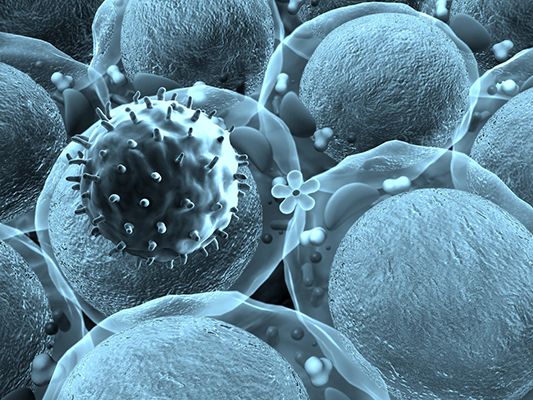Sneaking somewhere inside certain tumors are “factories” loaded with safe cells that help the body battle a rearguard activity against malignant growth and are vital to helping a few patients recuperate, new research appears.
As of late specialists have gone to another treatment for malignant growth, immunotherapy, which works by utilizing the body’s very own insusceptible framework to battle tumors.
The procedure has to a great extent concentrated on white platelets called T-cells, which are “trained” to perceive and assault malignant growth cells.
However, the imaginative treatment just functions admirably for around 20 percent of patients, and scientists have been attempting to comprehend why a few people react superior to other people.
Three papers distributed on Thursday in the diary Nature point the way, recognizing a key development inside certain tumors: Tertiary lymphoid structures (TLS).
These structures work like “factories or schools” for resistant cells that help the body battle disease, said Wolf Fridman, Professor Emeritus of Immunology of Universite de Paris at the Center de Recherche des Cordeliers, who helped lead one of the examinations.
“The cells need to be educated in schools, which are the tertiary lymphoid structures,” where they successfully figure out how to perceive and assault malignancy cells, Fridman told AFP.
No more drawn out ‘guiltless spectators’
Key to the discoveries is that T-cells are a long way from the main insusceptible cells fit for taking the battle to malignant growth, with analysts finding the TLS were brimming with B-cells, a sort of resistant cell that produces antibodies.
“We have been T-cell addicts for 15 years in cancer,” Fridman said with a giggle.
“We analysed these sarcomas to see what groups they had and what’s striking is that these B-cells appeared.”
Beth Helmink, an individual in careful oncology at the University of Texas’ MD Anderson Cancer Center who took a shot at a subsequent report, said the examination changed impression of the job of B-cells in immunotherapy.
“Through these studies, we find that B-cells are not just innocent bystanders, but are themselves contributing in a meaningful way to the anti-tumour immune response,” they said in an announcement gave by the Center.
The revelation is something of an astonishment, as a bounty of B-cells in disease patients has here and there been viewed as a marker for poor guess.
In any case, the investigations found that patients with elevated levels of B-cells inside TLS in their tumors were bound to react well to immunotherapy.
“These three studies provide exciting data demonstrating that… B cells which make antibodies significantly influence the responsiveness of patients with certain cancers to immunotherapy,” said Lawrence Young, chief of the University of Warwick’s Cancer Research Center, who was not engaged with the examinations.
The work “could be used to improve the effectiveness of cancer immunotherapy for all patients”, they said.
Improving malignant growth treatment
There are as yet numerous unanswered inquiries.
Researchers are not yet sure why the structures structure in certain tumors and not others.
And keeping in mind that it presently appears to be evident that B-cells inside the structures assume a key job in the accomplishment of immunotherapy, researchers aren’t sure correctly how.
It might be that the B-cells are on the forefronts, creating antibodies that assault malignant growth cells effectively.
Or on the other hand they might be supporting T-cells, or maybe doing both.
What’s more, not all TLS are made equivalent: the analysts discovered three classes, however just one sort was “mature” enough to produce malignant growth battling insusceptible cells.
Going ahead, the exploration opens a few promising roads, the creators said.
At first, it could assist specialists with screening patients to see which are destined to react well to immunotherapy.
Also, in the end, the exploration could mean more patients could be effectively treated with the method, said Goran Jonsson, a teacher of oncology and pathology at Lund University who took a shot at a third report.
“On the off chance that we concoct a treatment that could upgrade TLS arrangement, we could consolidate this with current immunotherapy regimens,” they told.
“Most likely this would lead to more patients responding to immunotherapy.”
Lily studied first with her father, François Félix-Miolan, an oboist, and later at the Conservatoire of Paris with Gilbert Duprez. After winning the second prize at the Conservatorie, she began touring throughout France, making her stage debut in Brest
Disclaimer: The views, suggestions, and opinions expressed here are the sole responsibility of the experts. No People Reportage journalist was involved in the writing and production of this article.





